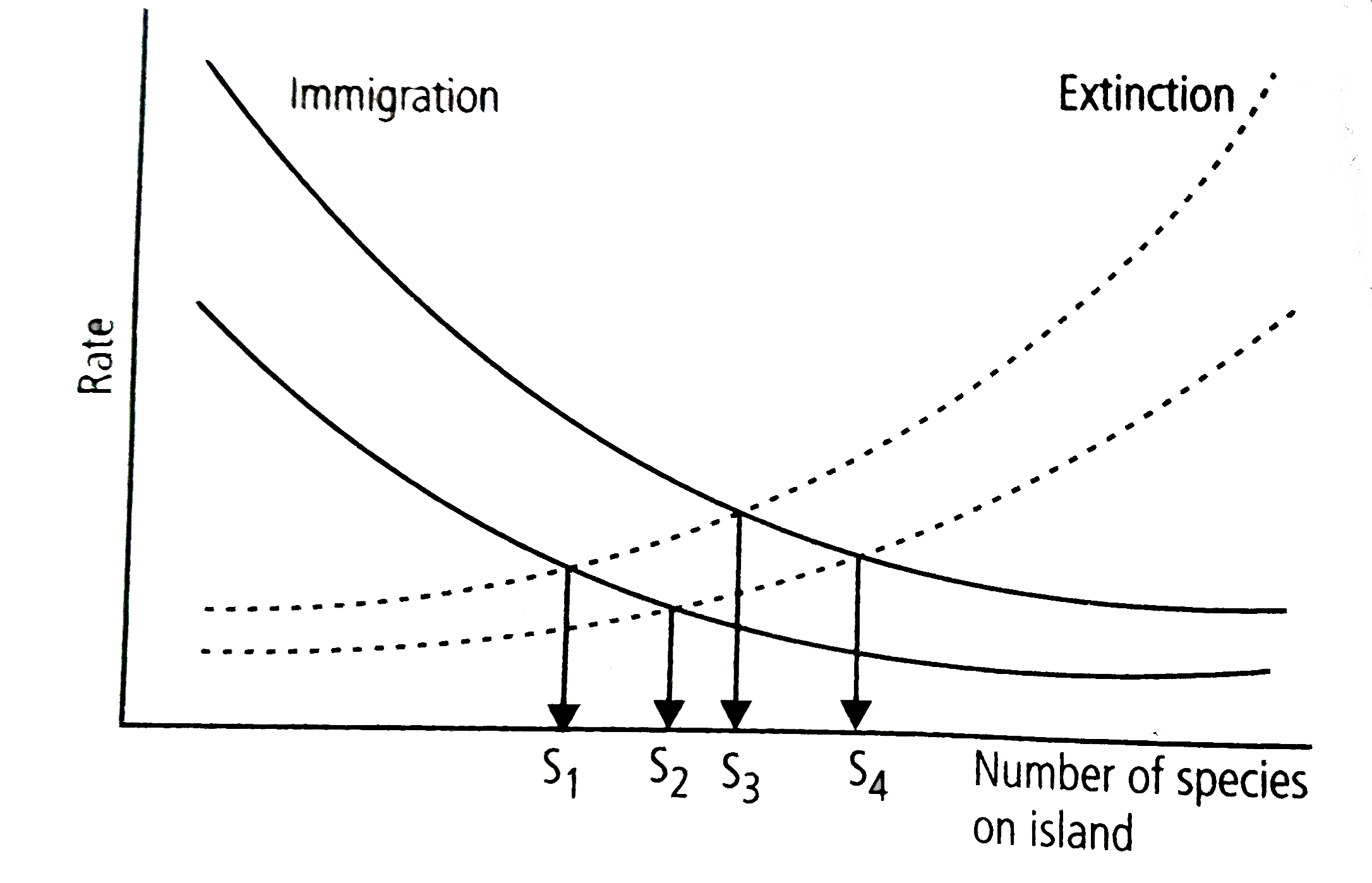How is the presently occuring species extinction different from the earlier mass extinctions ?
Step-by-Step Solution:
1. Understanding Biodiversity and Extinction:
- Biodiversity refers to the variety of life forms on Earth, including different species of plants, animals, and microorganisms. Extinction is the process where a species completely disappears from Earth.
2. Historical Context of Mass Extinctions:
- Throughout Earth's history, there have been five major mass extinction events where a significant number of species were lost rapidly. These events were primarily caused by natural phenomena such as volcanic eruptions, climate changes, and asteroid impacts.
3. Current Species Extinction:
- The current extinction crisis is characterized by a significant decline in species populations, threatening many with extinction. Unlike past events, this crisis is largely driven by human activities.
4. Anthropogenic Causes:
- The present extinction is primarily an anthropogenic phenomenon, meaning it is caused by human actions. Activities such as deforestation, habitat destruction for agriculture, pollution, and climate change are leading to the loss of biodiversity.
5. Rate of Extinction:
- The current rate of extinction is alarming, estimated to be 100 to 1,000 times greater than the historical rates observed during previous mass extinctions. This rapid loss of species is unprecedented in the history of life on Earth.
6. Comparison with Past Extinctions:
- In summary, the key differences between the current extinction crisis and earlier mass extinctions are:
- Cause: Current extinctions are primarily due to human activities (anthropogenic) rather than natural disasters.
- Rate: The current extinction rate is significantly higher than that of past mass extinctions.
- Biodiversity refers to the variety of life forms on Earth, including different species of plants, animals, and microorganisms. Extinction is the process where a species completely disappears from Earth.
- Throughout Earth's history, there have been five major mass extinction events where a significant number of species were lost rapidly. These events were primarily caused by natural phenomena such as volcanic eruptions, climate changes, and asteroid impacts.
- The current extinction crisis is characterized by a significant decline in species populations, threatening many with extinction. Unlike past events, this crisis is largely driven by human activities.
- The present extinction is primarily an anthropogenic phenomenon, meaning it is caused by human actions. Activities such as deforestation, habitat destruction for agriculture, pollution, and climate change are leading to the loss of biodiversity.
- The current rate of extinction is alarming, estimated to be 100 to 1,000 times greater than the historical rates observed during previous mass extinctions. This rapid loss of species is unprecedented in the history of life on Earth.
- In summary, the key differences between the current extinction crisis and earlier mass extinctions are:
- Cause: Current extinctions are primarily due to human activities (anthropogenic) rather than natural disasters.
- Rate: The current extinction rate is significantly higher than that of past mass extinctions.
Topper's Solved these Questions
- BIODIVERSITY AND CONSERVATIONBOOK - NCERT EXEMPLAR ENGLISHCHAPTER - BIODIVERSITY AND CONSERVATIONEXERCISE - LONG ANSWER TYPE QUESTIONS
9 Videos
- BIODIVERSITY AND CONSERVATIONBOOK - NCERT EXEMPLAR ENGLISHCHAPTER - BIODIVERSITY AND CONSERVATIONEXERCISE - VERY SHORT ANSWER TYPE QUESTIONS
16 Videos
- BIOTECHNOLOGY AND ITS APPLICATIONS BOOK - NCERT EXEMPLAR ENGLISHCHAPTER - BIOTECHNOLOGY AND ITS APPLICATIONS EXERCISE - All Questions
57 Videos
Similar Questions
Knowledge Check
Island biogeography theory states that the number of species on an island is determined by immigration rates of new species to the island and extinction rates of species on the island. Immigration rates to an island decline as its distance from the mainland increases adn extinction rates decreases with increasing island size. when the immigration and extinction rates on an island are equal, the number of species on the island reaches equilibrium.

Which of the following gives the correct combination of distance (near and far) and area (small and large of islands where species (S1−S4) occur ?AS1− near island, small islandBS2− near island, large islandCS3− small island, far islandDS4 near island, large island
Fear of extinction of species from tropical forests is
View SolutionSince the origin of life on Earth, there were five episodes of mass extinction of species .
(i) How is the 'Sixth Extinction', presently in progress, different from the previous episodes ?
(ii) Who is mainly responsible for the 'Sixth Extinction' ?
(iii) List any four points that can help to overcome this disaster.
View SolutionSecond mass extinction occurred during
View SolutionHow many species became extinct in the last 500 years
View Solutioncurrently we are experiencing the..... episode of mass extinction of species
View SolutionThe percentage of all gymnosperm species facing extinction is
View SolutionRecently extinct animal from India is
View Solution
